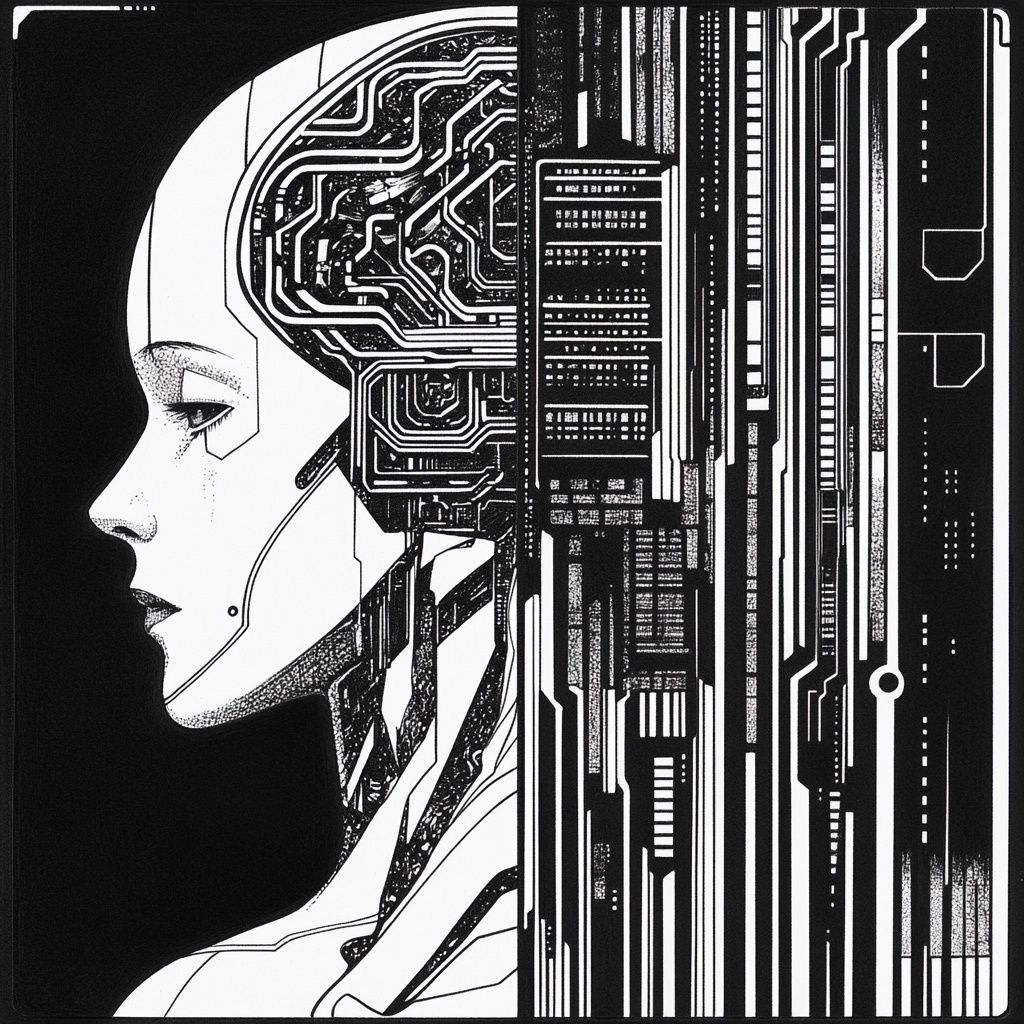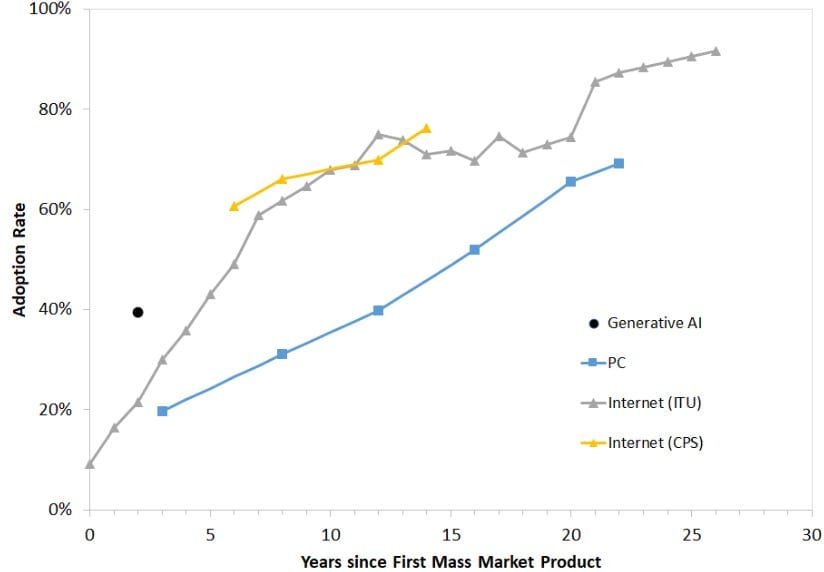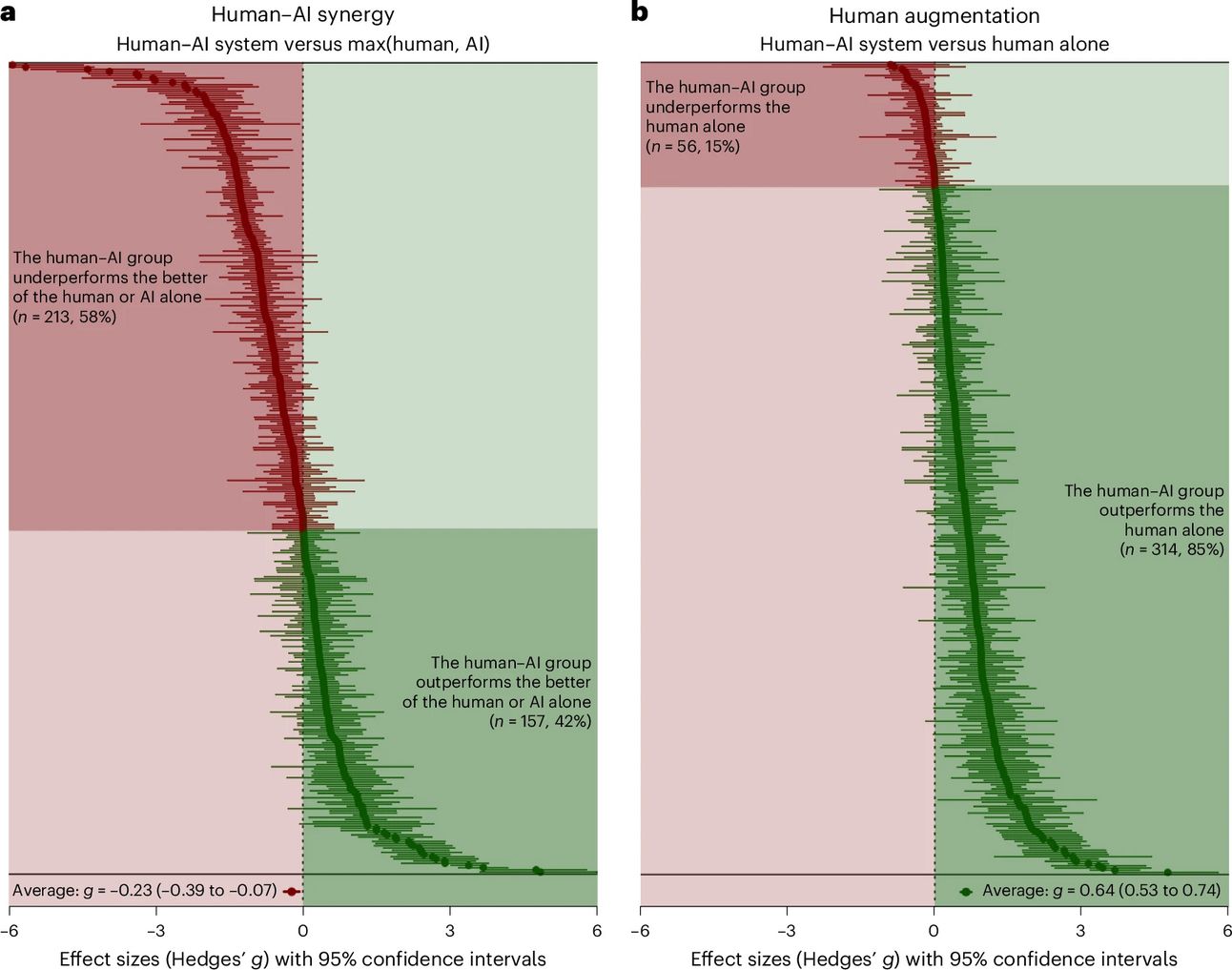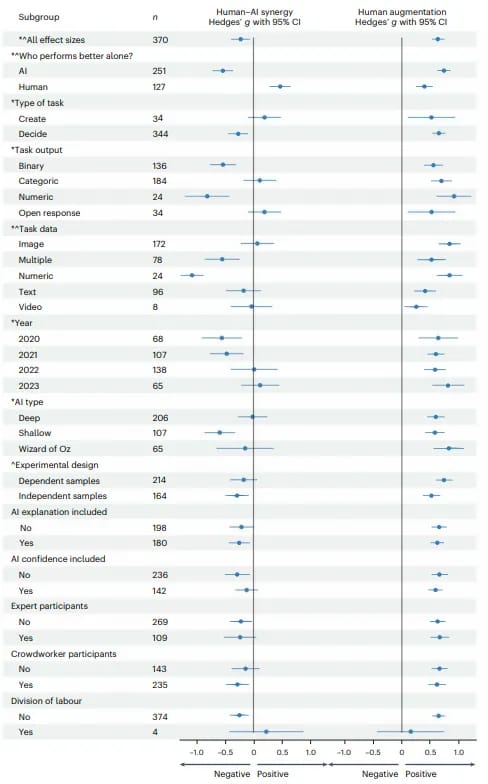- The Level Up
- Posts
- AI Is Taking Over Jobs: Are You Prepared for the Future?
AI Is Taking Over Jobs: Are You Prepared for the Future?

You know that feeling when a new tech trend hits, and suddenly everyone’s an expert? Yeah, AI is that trend on steroids. It’s spreading faster than a viral TikTok dance, and it’s not just for cat videos or writing your kid’s homework. In September 2024, the St. Louis Fed dropped a stat that should make you sit up: two years after the first mass-market generative AI tool launched, 40% of Americans are using it at home or work. The internet—perhaps the most important innovation (until now) of our lifetime—took five years to hit that mark.

Source: St. Louis Fed
So why should you care? Because this isn’t just about convenience or productivity hacks. It’s about whether AI is making us better at our jobs—or quietly plotting to replace us.
The Big Test: Humans vs. AI vs. The Dream Team
A Nature Human Behaviour study analyzed 370 experiments across 106 studies to answer two big questions:
Can AI compete with humans?
Is the human-AI collab the dream team we’ve been promised?
Spoiler: The answers are complicated—and not in the way AI evangelists would like. Below we can see a comparison of Human - AI synergy vs Human augmentation performance:

a,b, The positions of the points on the x axes represent the values of the effect sizes, and the bars indicate the 95% CIs for the effect sizes. The colours of the points and bars correspond to the values of the effect sizes, with negative effect sizes coloured red and positive effect sizes coloured green. The black dashed line corresponds to an effect size of g = 0, which means that the human–AI system performed the same as the baseline. The point at the bottom of the graph represents the meta-analytic average effect size and CI.
Source: Vaccaro et al. (2024)
The Good News: AI Makes Humans Better (Sort Of)
Humans using AI tools crush humans without them. The average improvement? A hefty 0.63 on the Hedges’ g scale—a statistical measure of performance difference. In simple terms:
If you’re a C student, AI bumps you to an A.
The biggest gains are in number-crunching tasks (0.91), but creative work (0.52) and decision-making (0.65) also get a solid boost.
AI is essentially a performance-enhancing drug for your brain—legal, and way less sweaty than Adderall.
The Kicker: Collaboration Isn’t Always King
The study also tested human-AI teams against the better of the two working solo. The result? The dream team often falls short.
If AI is already better than humans, adding a human makes things worse (Hedges’ g of -0.23).
In 249 of 370 experiments, AI outperformed humans outright. Adding humans lowered performance (-0.54 Hedges’ g).
In 121 cases, humans were better—but AI did help a bit.
Translation? If AI outperforms you at a task, your "human touch" probably drags things down rather than helps. Think of it like putting a toddler in the driver’s seat of a Tesla—cute, but not exactly effective.
Below we can see performance by task type of of Human - AI synergy vs Human augmentation performance:

Here n is the number of included effect sizes for the moderator subgroup level, and the estimated effect size with the corresponding 95% CI is shown for each level. The symbols in front of the moderators indicate whether there is a statistically significant difference between the subgroups for human–AI synergy (*) and human augmentation (∧).
Source: Vaccaro et al. (2024)
The Cold Calculus: What This Means for You
Businesses aren’t sentimental. They don’t care about your charm or how well you make coffee. They care about efficiency, cost, and output. The playbook is clear:
Find tasks where AI beats humans → Replace humans.
Find tasks where humans still win → Give them AI tools to stay ahead.
Repeat as AI gets smarter.
As of mid-2023, AI outperformed humans in 249 of 370 experiments—and the gap is only growing. If you want your mind blown by how fast AI is improving, check out Ethan Mollick’s latest research.
Your Move: Adapt or Get Left Behind
AI isn’t just another tech wave—it’s a tsunami. You can’t fight it, but you can surf it.
✅ Audit Your Tasks: Be brutally honest—what parts of your job could AI do better? If it’s repetitive or data-heavy, you’re on borrowed time.
✅ Lean on Human Strengths: Creativity, emotional intelligence, and complex problem-solving are your moats—for now.
✅ Experiment with AI Tools: Use them to enhance your work, but don’t rely on them blindly. They’re tools, not crutches.
🚀 Next Steps: Pick one task you do regularly. Test it with ChatGPT or Claude. Compare the output. If AI wins, start pivoting. If you win, integrate AI to level up. Either way, you’re ahead of the curve.
AI isn’t coming for your job—it’s already here. The question is: are you the toddler in the Tesla, or the one building the next model?
Your call.